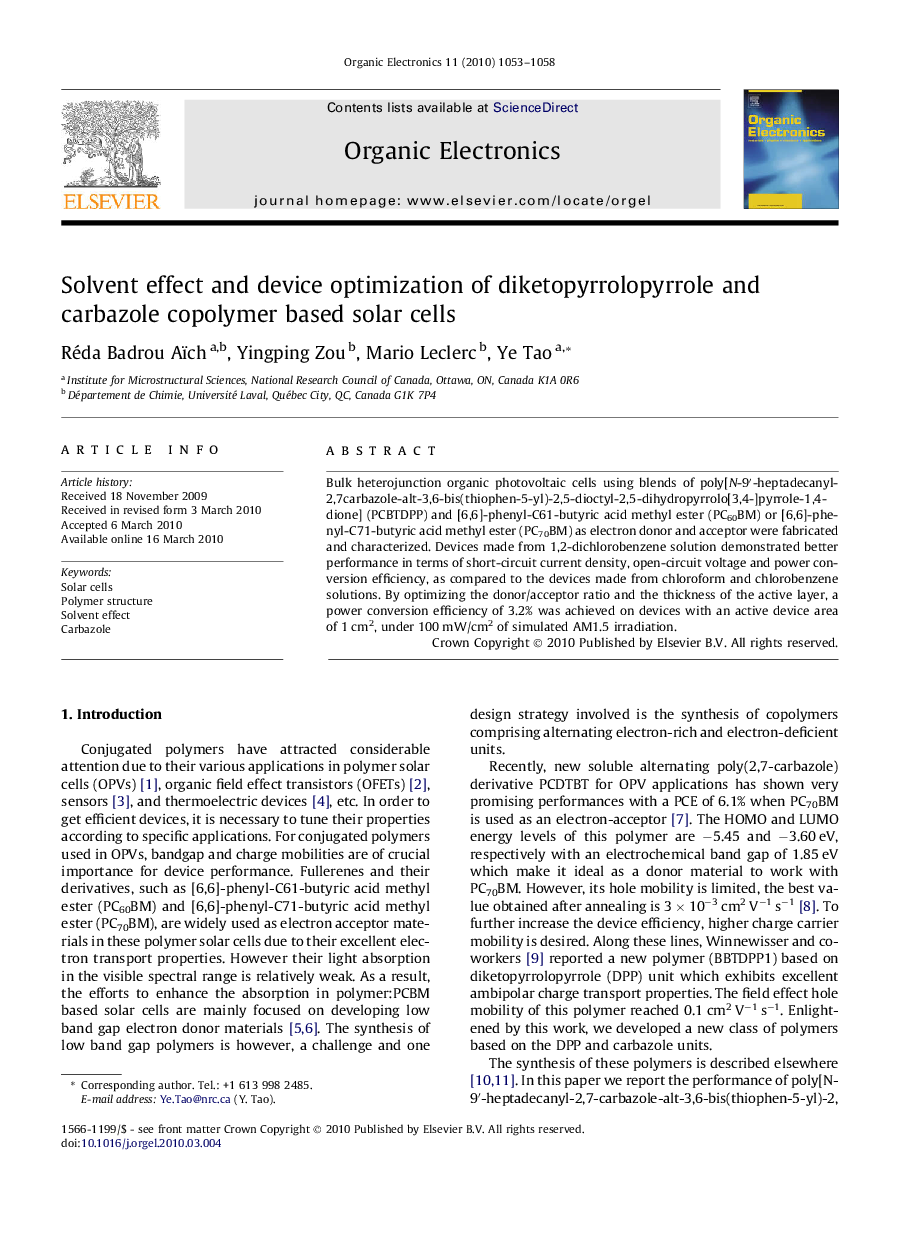| Article ID | Journal | Published Year | Pages | File Type |
|---|---|---|---|---|
| 1264185 | Organic Electronics | 2010 | 6 Pages |
Bulk heterojunction organic photovoltaic cells using blends of poly[N-9′-heptadecanyl-2,7carbazole-alt-3,6-bis(thiophen-5-yl)-2,5-dioctyl-2,5-dihydropyrrolo[3,4-]pyrrole-1,4-dione] (PCBTDPP) and [6,6]-phenyl-C61-butyric acid methyl ester (PC60BM) or [6,6]-phenyl-C71-butyric acid methyl ester (PC70BM) as electron donor and acceptor were fabricated and characterized. Devices made from 1,2-dichlorobenzene solution demonstrated better performance in terms of short-circuit current density, open-circuit voltage and power conversion efficiency, as compared to the devices made from chloroform and chlorobenzene solutions. By optimizing the donor/acceptor ratio and the thickness of the active layer, a power conversion efficiency of 3.2% was achieved on devices with an active device area of 1 cm2, under 100 mW/cm2 of simulated AM1.5 irradiation.
